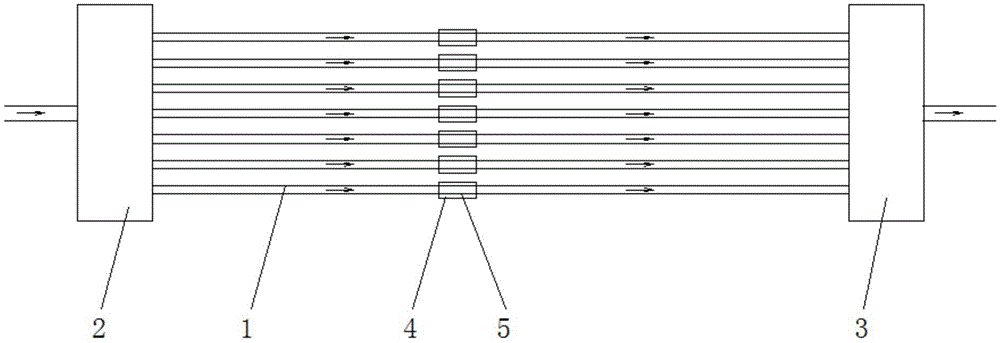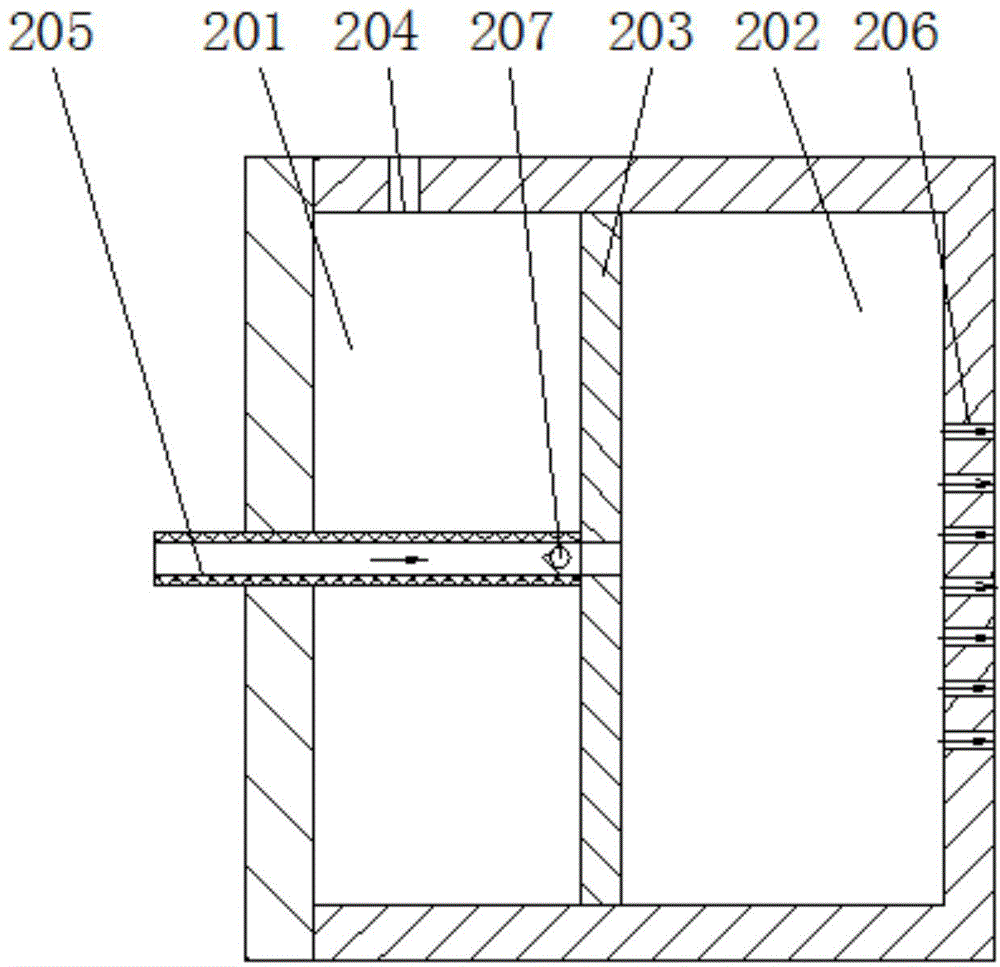Sub-terahertz nano biosensor for detecting single or few cells
A biosensor, a small number of cell technology, applied in the direction of measuring devices, scientific instruments, individual particle analysis, etc., can solve the problems of inability to identify the signal-to-noise ratio of single cells, the inability to detect single or a small number of cells with terahertz light sources, etc., to reduce The effect of original sample volume, improvement of detection efficiency and quality, and elimination of bacterial culture
- Summary
- Abstract
- Description
- Claims
- Application Information
AI Technical Summary
Problems solved by technology
Method used
Image
Examples
Embodiment 1
[0029] Such as Figure 1 to Figure 3 As shown, this embodiment includes a microfluidic unit, a slot nano-antenna 4, and the microfluidic unit includes at least one microfluidic body 1 in a tubular structure, a positive pressure generating device 2 arranged at the cell inlet end of the microfluidic body 1, a set The negative pressure generating device 3 at the cell outlet of the microfluidic body, the positive pressure generating device generates positive pressure, and the negative pressure generating device generates negative pressure. Under the combined action of positive and negative pressure, the cells of the cell solution are pushed into the microfluidic body 1, To realize detection, the slot nano-antenna 4 is provided with a long and narrow slot 5 that runs through the antenna body, and the microfluidic body 1 passes through the long and narrow slot 5 one by one. enlarge.
[0030] In this embodiment, by setting the microfluidic unit and using the positive pressure and ne...
Embodiment 2
[0038] Such as Figure 4 As shown, the difference between embodiment 2 and embodiment 1 is that the microfluidic body 1 is set as a Y-shaped structure, that is, the microfluidic body is combined into a unified channel before the negative pressure generating device 3 is connected, so that multiple microfluidic bodies 1 The centralized processing of the pipes forms a negative pressure structure, and the cell solution is more likely to enter the microfluidic body 1, and the effect is better. Other structures are identical with embodiment 1, different Ao states here.
Embodiment 3
[0040] Such as Figure 5 For Example 3, the difference from Example 1 is that the microfluidic body 1 is set in a U-shaped structure, which can increase the length of the microfluidic body, and it is easier to disperse a certain number of cells to be tested, which is conducive to the entry of the cell solution Microfluidic body 1, the effect is better. Other structures are the same as in Embodiment 1, and will not be described here again.
PUM
| Property | Measurement | Unit |
|---|---|---|
| The inside diameter of | aaaaa | aaaaa |
Abstract
Description
Claims
Application Information
 Login to View More
Login to View More - R&D
- Intellectual Property
- Life Sciences
- Materials
- Tech Scout
- Unparalleled Data Quality
- Higher Quality Content
- 60% Fewer Hallucinations
Browse by: Latest US Patents, China's latest patents, Technical Efficacy Thesaurus, Application Domain, Technology Topic, Popular Technical Reports.
© 2025 PatSnap. All rights reserved.Legal|Privacy policy|Modern Slavery Act Transparency Statement|Sitemap|About US| Contact US: help@patsnap.com



